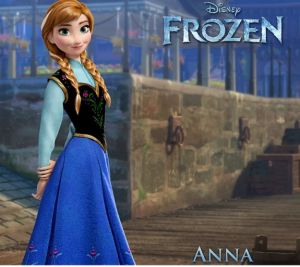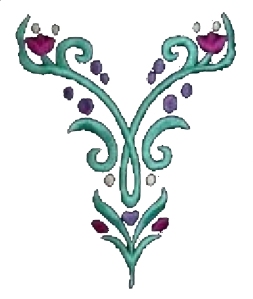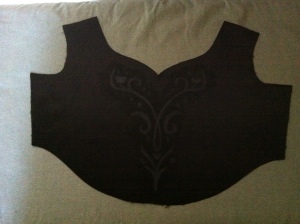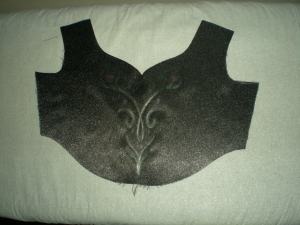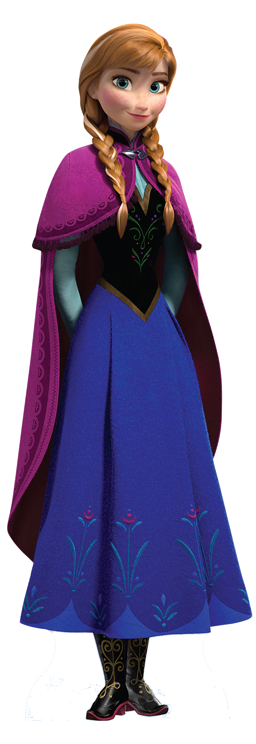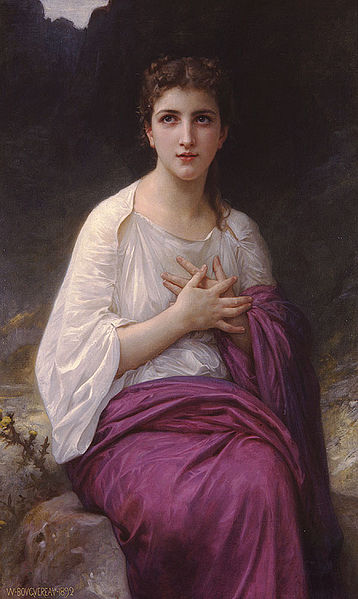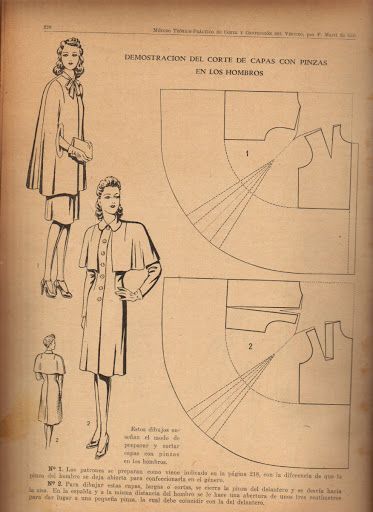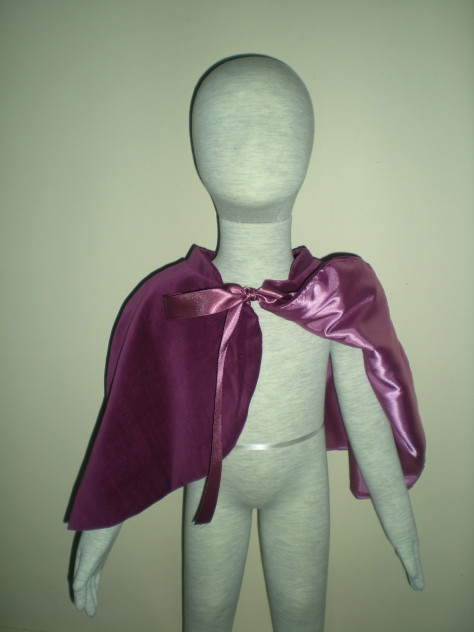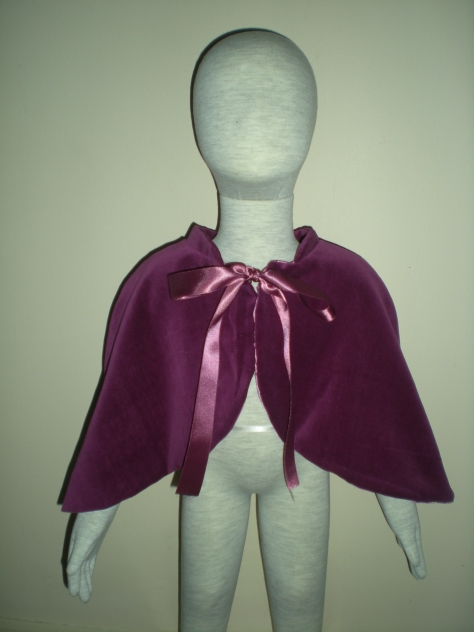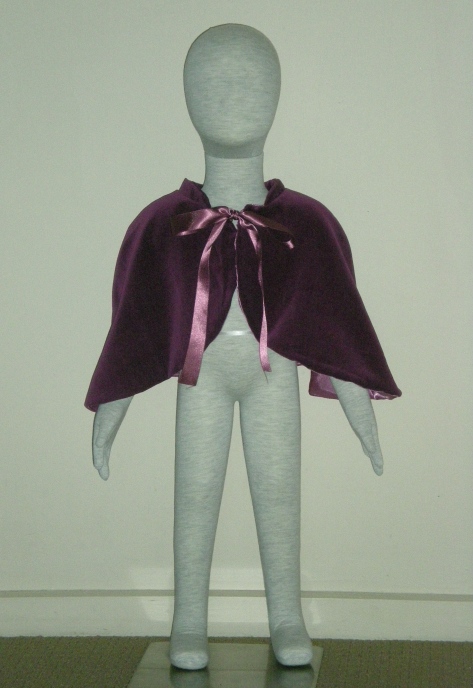Now that I’ve developed my Princess Anna cape, I need to work on the dress that goes under it. Anna’s dress has some fancy stuff going on though, so I’ve been forced to do some product testing to avoid attempting fancy stitching. Not sure if you can see the design clearly in the picture above, but, doing a little photoshop work, it looks a little like this:
After a little research, I decided that I wanted to do something with paint. The catch there, of course, is that the bodice of Anna’s dress is black. There is no end of difficulty finding a simple, affordable paint that will show on black fabric. And then I stumbled across Derivan FabricArt Markers. They seemed to meet all of the requirements. Easy to use, not hugely expensive, and, in the kicker, available in a white that seems to allow colours to show on black. The video on the website shows them producing some fairly crisp images on black fabric. I got excited and ordered a few. I got even more excited today when I heard the postman quite literally throw them at my front door. (Side note: How hard would it have been for him to take the extra 12 steps and put them at the front door, instead of standing at the bottom step and throwing? Thank god they were well wrapped within the package, or I think I might now be reviewing shards of marker.)
In my excitement, I didn’t wait to test them. I had a bodice cut out from an earlier failed experiment, and decided that it would do for testing. I carefully stencilled on my design – which was the purpose of the Photoshop exercise, creating a working stencil – and waited for the white paint to reveal itself. I have to admit, I probably had unrealistic expectations. It’s a bad habit I’m trying to break. But I was not wholly disappointed with the first attempt. After all, I’d been aware that I might have to do multiple applications. So, rather than throwing the pens away in disgust when I didn’t get a clear image after the first application, I patiently did another round, and then a third. Before heat setting the third application, I was excited again. It looked great.
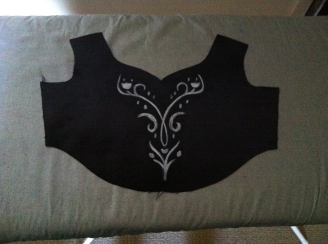 And then I ironed it. I followed directions. I’d waited for it to dry. I used the right heat setting, on the reverse of the fabric. I moved the iron evenly over the design, and hopefully turned it back right side up. And this is what I saw.
And then I ironed it. I followed directions. I’d waited for it to dry. I used the right heat setting, on the reverse of the fabric. I moved the iron evenly over the design, and hopefully turned it back right side up. And this is what I saw.
Yeah. It was gone. It looks a little like the design had been flocked. But not really. Looking closer, it was embossed onto the satin of the bodice. It was visible in the right light, and kind of cool, but not at all what I wanted. Not entirely daunted, I moved on and thought that perhaps another application of white, followed by some colour may have the desired effect. I bet you’re waiting on the edge of your seat to know how this turns out, yes? So I’ll cut to the chase. Another white, and two layers of colour, and this is where I stand:
Look closely, and you can just make out some colour there. Some. Again, I show that my skills with a camera are a little lacking, but even allowing for that, it’s not great. All in all, not impressed. It may warn on the packaging that there are no guarantees with dark fabric, but if that’s the case, don’t use it in your video promo, Derivan.
In no way could I give this to a kid and have them think it was a real Anna dress. I’d already written off my chances of doing the design on the skirt. But now I’m really back to the drawing board. I have no skill with a paint brush, and no desire to spend the $12-15 per colour that would let me test them, since there’s every chance that this would also fail. And I don’t really want to give up the time to embroider them all – that’s a whole lot of time to invest in a kids costume. So I’m back at the drawing board and researching alternatives. If anybody has any ideas, short of buying a sewing machine that will embroider, I’d love to hear from you!
